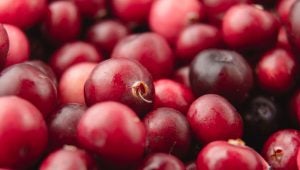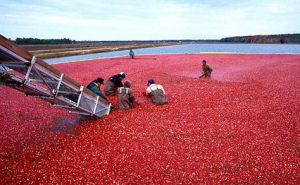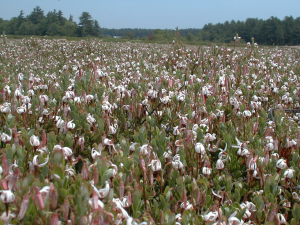When you think of some facts about cranberries, you might be thinking of Thanksgiving and using cranberry sauce. Well, you wouldn’t be far off in many cases. Every year 20 percent of the more than 400 million pounds of cranberries Americans eat are consumed during the week of Thanksgiving.
There are, however, many benefits beyond enjoying them just one time of the year: Cranberries include a high amount of antioxidants that can help protect against heart disease, cancer and other diseases.

So, do you want to know more about cranberries? Here are 9 facts about cranberries — both in terms of their health benefits and the farming behind them — that should make them more of a staple of our dinner tables.
1. Dried cranberries or Ocean Spray Cranberries Inc. craisins are a good source of dietary fiber and holds a similar sugar content as other dried fruits. They can be added to essentially anything: Salads, yogurt, meat entrees, casseroles, sandwiches … name the combination, and you can be sure that cranberries add a hint of sweetness.
2. A natural flavonoid in cranberries are proanthocyanidins (PACs). Essentially, cranberry PACs are different compared with other fruits and vegetables containing PACs. Cranberries, according to research, can help prevent the adhesion of certain harmful bacteria. For women, especially, research has shown a reduction in UTIs when consuming dried cranberries every day. It also may help protect “bad” cholesterol with inhibiting bacteria associated with gum disease and stomach ulcers. That’s why when you may go to the grocery store, there are varieties of cranberry tablets to choose from to help with health in general.
3. Only 5 percent of cranberries are eaten as fresh fruit, while 95 percent are processed into juices, jams, sauces, and other products. It takes about 4,400 berries to make a gallon of juice and there are about 440 berries in a pound.

4. Some folks believe that cranberries are grown in water because of popular harvest photos like the one above. But the reality is that the crop grows in sandy soil and the bogs are flooded with water when it’s time to harvest. The cranberries float (and can also bounce!) to the top, which allows farmers to skim and harvest the buoyant berries. After harvest, the bogs are drained and snow and ice take over for the winter. Additional sandy soil will be applied on top so that when the snow melts, the sand will help reduce pest pressure in the fields.
5. Dried cranberries also don’t have many added ingredients. For the Wetherby Cranberry Co., the product only has three ingredients including cranberries, sugar and refined sunflower oil. The sunflower oil is used as a processing aide to ensure fresh dried cranberries. The family business with over 100 years in the family name, like many cranberry growers, also sell a variety of other products including cranberry wine and cranberries from their own bogs.
6. Official cranberry farming began in the 1800s, and early settlers brought honeybees over to help with pollination. Despite being called “berries,” cranberries are technically not berries; they belong to a class of fruits called epigynous or false berries. Their fruit grows from beneath the rest of the flower parts and as the fruit ripens the flower stays attached and ripens as well.
7. There are many varieties of cranberries. This is to allow the crop to not all be harvested at once and spread it out between early fall and into November. With many different varieties in other foods like apples, it’s similar. The varieties are best used for specific items from juices to baking.

8. Wisconsin leads the way in production, with three-fifths of the nation’s cranberry supply. The Wisconsin cranberry industry is responsible for over 4,000 jobs, and Americans eat about 400 million pounds of cranberries a year. Other regions known for these farms are Massachusetts, New Jersey, Oregon, Washington, and parts of Canada. Three-fourths of the world’s cranberry supply comes from the U.S.
9. If you’d try a whole cranberry, it may be a bit tart. Therefore, most cranberries are sliced for dried cranberries to enhance the natural tart flavor to the fruit. What’s also unique about the cranberry is they are low in sugar and high in acidity compared to other berries. The additional sweetness added to dried cranberries helps balance the flavor.
From color to size, varieties will change. Even so, at the world’s largest cranberry festival in Wisconsin, Warrens Cranberry Festival, has a “Biggest Berry Contest.” An eighth-generation cranberry grower, 8-year-old Ada Nemitz, won it in 2022 at a whopping 6.0914 grams with the crimson king variety!
So much to enjoy related to cranberries. Find out how to cook with cranberries (here’s a great list of recipes) and you may find out how much more there is to cranberries during this harvest season.
Michelle Miller, the “Farm Babe,” is an internationally recognized keynote speaker, writer, and social media influencer and travels full time to advocate for agriculture. She comes from an Iowa-based row crop and livestock farming background and now resides on a timber farm in North Central Florida.



